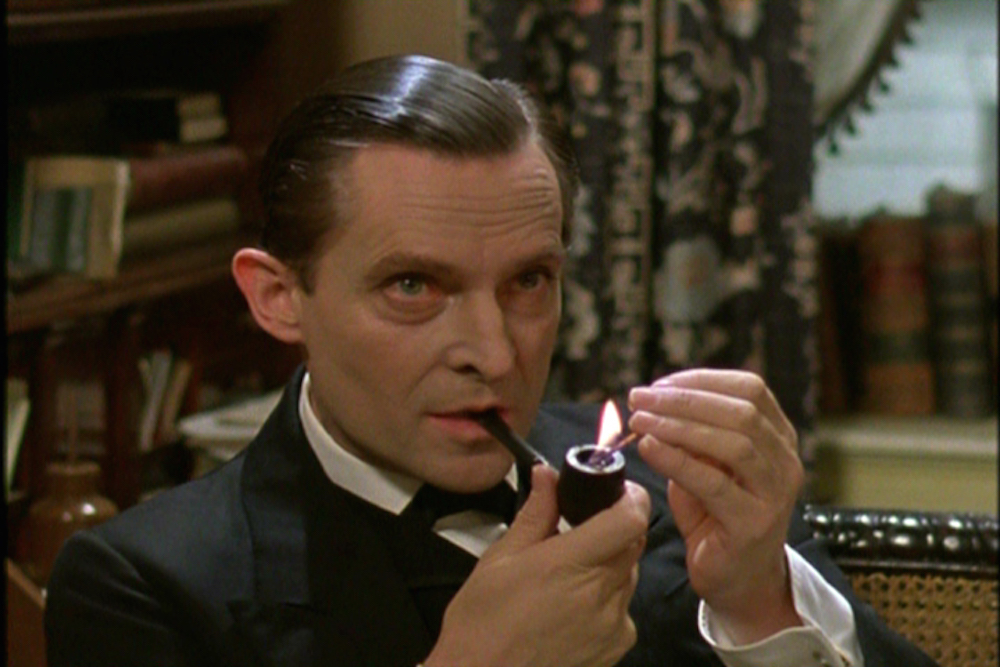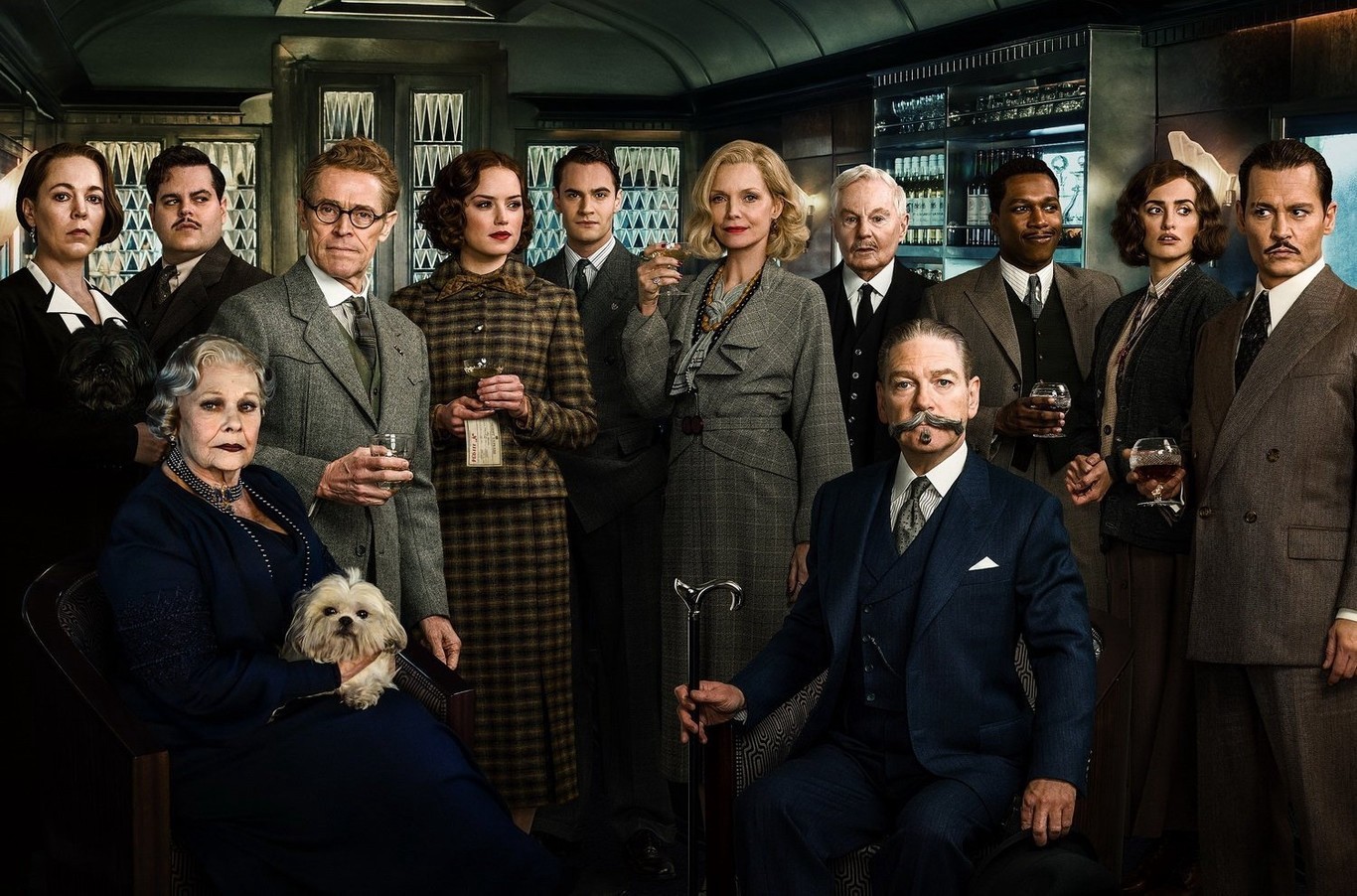Books & Culture
How “Knives Out” Turns the Whodunit on Its Head
Rian Johnson's film is both an homage to conventional mystery stories and an inversion of their tropes

Edmund Wilson was not a fan of detective fiction. In a 1944 essay titled “Why Do People Read Detective Stories?” he detailed his befuddlement at this newly burgeoning genre attracting all kinds of fans, from Woodrow Wilson to T.S. Eliot. “Almost everybody I know seems to read them,” he bemoaned, which is why he set out to figure out what all the fuss was about. What he found, in reading the likes of Agatha Christie, Rex Stout, and Dashiell Hammett, was in his estimation a hollow type of novel, a page-turner that demanded little of its readers other than to rush along its propulsive plotting. His essay, a hot take of its time, angered his readers who sent in irate letters that in turn became fodder for a follow-up piece, “Who Cares Who Killed Roger Ackroyd?,” in which he doubled down on his criticism of the whodunnit genre.
Wilson’s rather snobbish critique sounds familiar because it’s been lobbed at detective fiction for decades since. Derided for producing the kind of novels one solely reads for the plots and dismissed for creating self-contained worlds that at best mirror and at worst perpetuate the status quo, the murder mystery genre has long been a punching bag of sorts. But after a century of such criticism, Rian Johnson’s Knives Out is punching back. This modern twist on an old classic understands that the genre’s formulas are fertile ground on which to hang strident critiques of privilege and class—not by modernizing its tropes but by weaponizing them for a new audience. All the elements of the genre remain (an unsolved murder, a parade of possible suspects, a keen-eyed detective). Here, though, they are used to reveal not just who did, indeed, do it, but why such a mystery poses a danger to those most eager to have it solved. In a way Johnson pushes past Wilson’s critiques, creating a narrative where the question of “who killed Harlan Thrombey?” is both necessary and irrelevant at the same time.
After a century of criticism of the murder mystery genre, Knives Out is punching back.
As with most classic whodunnits, Knives Out begins in an overly cluttered and perfectly manicured large Victorian house. An estate, really. The Thrombey family has been gathered to celebrate its patriarch’s birthday. Christopher Plummer’s Harlan Thrombey is, in one of the film’s many cheeky nods to its generic lineage, a crime novelist known for his very successful murder mysteries. But the day after the festivities, Harlan is found dead, his throat slit open by his own hand. As open-and-shut a case as you’re likely to find—except that an anonymous tip has led famed private detective Benoit Blanc (Daniel Craig, sporting an absurd-sounding Southern accent) to reexamine the events that led to Harlan’s death, all in the days before the wealthy writer’s will is to be read.
Again, as per the stipulations of the genre, the film introduces us to the members of the Thrombey family—all of whom, given their proximity to Harlan (they were all staying at his home after the party) are suspects in Blanc’s eyes. There’s his devoted daughter Linda (Jamie Lee Curtis) alongside her husband Richard (Don Johnson) and the black sheep of the family, their son Hugh (Chris Evans); Harlan’s son Walt (Michael Shannon), who managed his literary estate, along with his wife Donna (Riki Lindhome) and their teenage son Jacob (Jaeden Martell); as well as his daughter-in-law Joni (Toni Collette), who depends on financial assistance from Harlan to pay for her daughter Meg’s school (Katherine Langford). The other two key characters in the picture are Harlan’s housekeeper Fran (Edi Patterson) and his nurse Marta (Ana de Armas).
Johnson sets up exactly the kind of puzzle that Wilson dismissed: a plot-riddled parlor trick that demands readers become sleuths-in-the-making. Here was an obvious suicide that nevertheless kicks off an investigation that reveals an entire family as plausible suspects, guilty perhaps not of murder but of something much more insidious. Wilson may have hated detective fiction, but his rant about it illuminates why the genre so captures people’s imaginations. It wasn’t surprising to him that whodunnits had become all the rage during the interwar period. “The world during those years was ridden by an all-pervasive feeling of guilt,” he wrote, “and by a fear of impending disaster which it seemed hopeless to try to avert because it never seemed conclusively possible to pin down the responsibility. Who had committed the original crime and who was going to commit the next one?” There will, he stresses, always be a second crime—and Knives Out quite diligently follows suit, reminding viewers that we can’t trust anyone on screen.
Paranoia, after all, is the guiding principle of any respectable whodunnit, and its resolution is the genre’s most tantalizing promise. But Johnson is aware that our paranoia cannot be so easily dispelled. At a time when fears of the other are rampant, especially when talking about immigrants, Knives Out sets out to challenge our assumptions about who is seen as a villain and who is a victim. By the time our trusted detective announces who was behind it all and how the improbable series of circumstances led to Harlan’s death, we are firmly distrustful of our gut instincts as well as of our more logical hunches. For Wilson, this was why the genre was so well-suited for the interwar generation. “Everybody is suspected in turn, and the streets are full of lurking agents whose allegiances we cannot know,” he adds. “Nobody seems guiltless, nobody seems safe.”
The neat resolutions that are the hallmark of the genre (the murderer is revealed) insist upon restoring order: “The murderer is spotted, and—relief!—he is not, after all, a person like you or me. He is a villain—known to the trade as George Gruesome—and he has been caught by an infallible Power, the supercilious and omniscient detective, who knows exactly where to fix the guilt.” Here’s where Knives Out refuses to play by the rules. Solving Harlan’s death becomes an exercise in showing how various members of the Thrombey family may well be variations on “George Gruesome,” villains in their own right—but they are also recognizable everyday people, whose guilt may not be easily pinned down to any one crime. Rather than reminding us that evil people are not “a person like you or me,” Knives Out stresses how fallible such distinctions can be by focusing precisely on the one guiltless party in the film.
The resolution of this ‘whodunnit’ isn’t about who done it. It’s about revealing how people like Marta are always suspects even before there is even a crime.
When the film first introduces us to the Thrombey family, they aren’t worried about being blamed for Harlan’s death; this was, they know, an unlikely but clear-cut suicide. Rather, the fear they betray when talking to Blanc is that their wealth and accomplishments will be challenged. Linda insists she built herself from the ground up (not mentioning the loan she got from her father); Walt establishes himself as a business savvy literary executor who was hamstrung by Harlan’s decision to forgo adaptations (others all but call him a moocher); while Joni boasts about her lifestyle brand (again, making little mention of how financially dependent she was on Harlan). The more we witness that final night in the Thrombey house, the more we realize Harlan was intent on making each of his family members understand the privilege he’d afforded them, having conversations with several of them that put their own futures in jeopardy. It’s no surprise when it’s Marta, the young nurse with an undocumented mother, who emerges as the film’s beating heart, even if all signs point to her having kicked off the series of events that led to Harlan’s death. The dramatic tension at the center of Knives Out hinges on Marta’s acquittal, an outcome that becomes, as the Thrombeys soon find out, a risk to their status quo.
The face-off between Marta and the moneyed and well-connected Thrombeys (whose self-serving liberal ideas of themselves are best encapsulated by the fact that none can remember where exactly Marta’s family is from) becomes the key to the puzzle at the heart of Knives Out. The picture-perfect facade of the family starts crumbling down once they learn not only more about Harlan’s death but about his will, which rewards Marta for her friendship and cuts his leeching family members off from Harlan’s fortune. That this causes young Marta to be persecuted, threatened, cajoled, and intimidated is the point of the film: the niceties they all afforded her when she cared for Harlan fall apart the moment she may well become their equal. The paranoia of the whodunnit is transformed; it’s not the fear of who might be next to die, but the more inchoate fears seemingly nice, liberal people still harbor about those who are unlike them. To the Thrombeys, Marta needn’t be guilty of killing Harlan; the threat she poses is her mere existence as their financial and social superior. Indeed, their legal fight against her and Harlan’s will doesn’t hinge on her guilt; she only needs to be credibly suspected of murder for the Thrombey family to get what they believe is rightfully theirs. When the villain of the piece is revealed and their scheme explained by Blanc, the paranoia is not dispelled. The resolution of this “whodunnit” isn’t about who done it at all. It’s about revealing how people like Marta were and are always suspects even before there is even a crime.
Unlike the novels Wilson was reading, this “George Gruesome” is indeed, a person like you and me, which makes his machinations all the more discomfiting. The guilt is not magically washed away by finding the culprit. Instead, the hunt for them has served as a way to unearth the ugliness that was there, around us, all along. Order is not restored. In fact, it’s turned upside down. The mistrust and paranoia that drive a whodunnit are here deployed not as a way to simply root out the guilty party (aka the person who caused Harlan’s death) but as a way to reveal how structures of power and privilege are similarly premised on near-crippling suspicion of the other.








